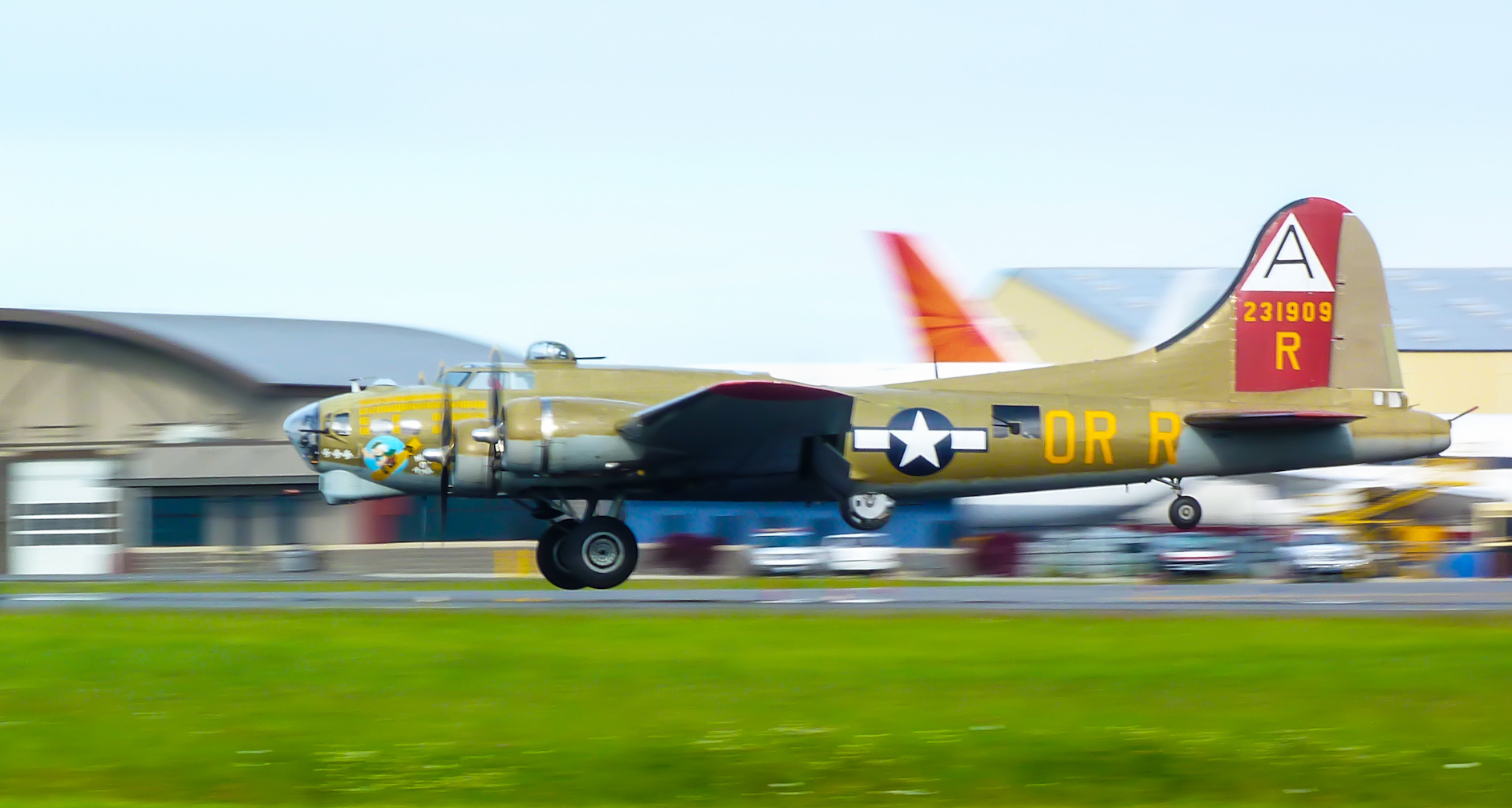The Nine-O-Nine – The 140 Combat Missions B-17 Legend

The Boeing B-17 Flying Fortress, one of the most iconic aeroplanes of the Second World War, established a formidable reputation for its robustness, reliability, and firepower. Among the 12,731 B-17s produced between 1935 and 1945, one stands out for its stellar war record and post-war legacy – the Nine-O-Nine.
Named after the last three digits of the military serial number, 42-31909, the Nine-O-Nine served the 8th Air Force, 91st Bomb Group, 323rd Squadron based in Bassingbourn, England, with distinction and valour.
The Battle-Tested Veteran
Constructed and delivered to the U.S. Army Air Forces in December 1943, the Nine-O-Nine was deployed in combat missions from February 1944 to April 1945.
During this short span, it executed many sorties without a single abort or loss of a crewman, an unparalleled feat at a time when the average lifespan of a new B-17 was just 11 missions.
 B-17s were often victims of heavy casualties.
B-17s were often victims of heavy casualties.
The Nine-O-Nine dropped 562,000 pounds of bombs over Germany and Nazi-occupied territories, contributing significantly to the Allied war effort by flying between 126 and 132 missions over Europe.
However, despite this, she was scrapped after the war.
The Nine-O-Nine’s Second Life
In the early 1980s, the Collings Foundation, a non-profit educational organization dedicated to preserving and showcasing historic aircraft, acquired Nine-O-Nine’s sister aircraft, a B-17G-85-DL and began a painstaking restoration process.
The goal was not only to return the aircraft to its original World War II configuration but also to honour the men who flew these mighty machines into battle.
By 1986, the restoration was complete and was painted just as Nine-O-Nine was during the war and took to the skies once again.
 The B-17 was painstakingly restored. Photo credit – Roger Wollstadt CC BY-SA 2.0.
The B-17 was painstakingly restored. Photo credit – Roger Wollstadt CC BY-SA 2.0.
The aircraft’s iconic olive drab livery, complete with its nose art featuring the namesake “Nine-O-Nine” and a graphic of the “Tall Tails” pin-up girl, instantly captured the imagination of aviation enthusiasts around the world.
The Tragic Final Chapter
But, tragedy struck when the meticulously restored Boeing B-17G crashed on October 2, 2019.
Nine-O-Nine took off from Bradley International Airport in Windsor Locks, Connecticut, for a routine flight that was part of the Collings Foundation’s Wings of Freedom Tour.
This tour allowed the public to experience flights in World War II-era aircraft.
However, shortly after takeoff, the aircraft experienced mechanical problems. The pilot reported engine trouble and requested to return to the airport.
Unfortunately, the aircraft crashed into the airport’s de-icing facility while attempting to land, erupting into flames.
 The remains of Nine-O-Nine.
The remains of Nine-O-Nine.
There were 13 people on board the aircraft at the time of the crash – three crew members and ten passengers.
Tragically, seven people died in the crash, including the pilot and co-pilot. The remaining six were seriously injured and received treatment at local hospitals.
One person on the ground was also injured in the accident.
The National Transportation Safety Board (NTSB) launched an investigation into the crash. The initial findings showed that the aircraft had been in the air for only five minutes before the crew reported a problem with the number 4 engine.
Despite efforts to turn back, the aircraft struck approach lights and then the de-icing facility.
The crash of the Nine-O-Nine, one of the most visible and widely recognized vintage military aircraft in operation, sent shockwaves through the community of operators and enthusiasts.
It spurred a nationwide discussion about the risks of operating vintage aircraft and the balance between preserving history and ensuring public safety.
The Federal Aviation Administration (FAA) also faced scrutiny for its oversight of vintage aircraft flights.
 Despite her tragic end the B-17 brought joy to many.
Despite her tragic end the B-17 brought joy to many.
The Nine-O-Nine’s tragic end serves as a poignant reminder of the risks associated with flying these vintage aircraft.
In Memoriam
Despite its tragic end, the Nine-O-Nine’s legacy lives on, serving as a symbol of American courage and tenacity during one of the darkest periods in world history.
It reminds us of the bravery of the men who served aboard these “flying fortresses,” battling against formidable odds to protect freedom and democracy.
Even beyond its active service, the Nine-O-Nine has played an essential role in keeping the history of WWII alive.
Thousands of people across America have stepped aboard this B-17 during its tours, getting a glimpse into the experiences of the Greatest Generation. Its unfortunate end underscores the ongoing challenge and importance of preserving historical artefacts.
In the grand history of the Second World War, the Nine-O-Nine holds a distinctive place.
As a beacon of resilience, survival, and duty beyond the call of service, this B-17 Flying Fortress serves as a poignant reminder of the past, urging us to appreciate the sacrifices made and the hard-won freedom we enjoy today.
If you like this article, then please follow us on Facebook and Instagram.





